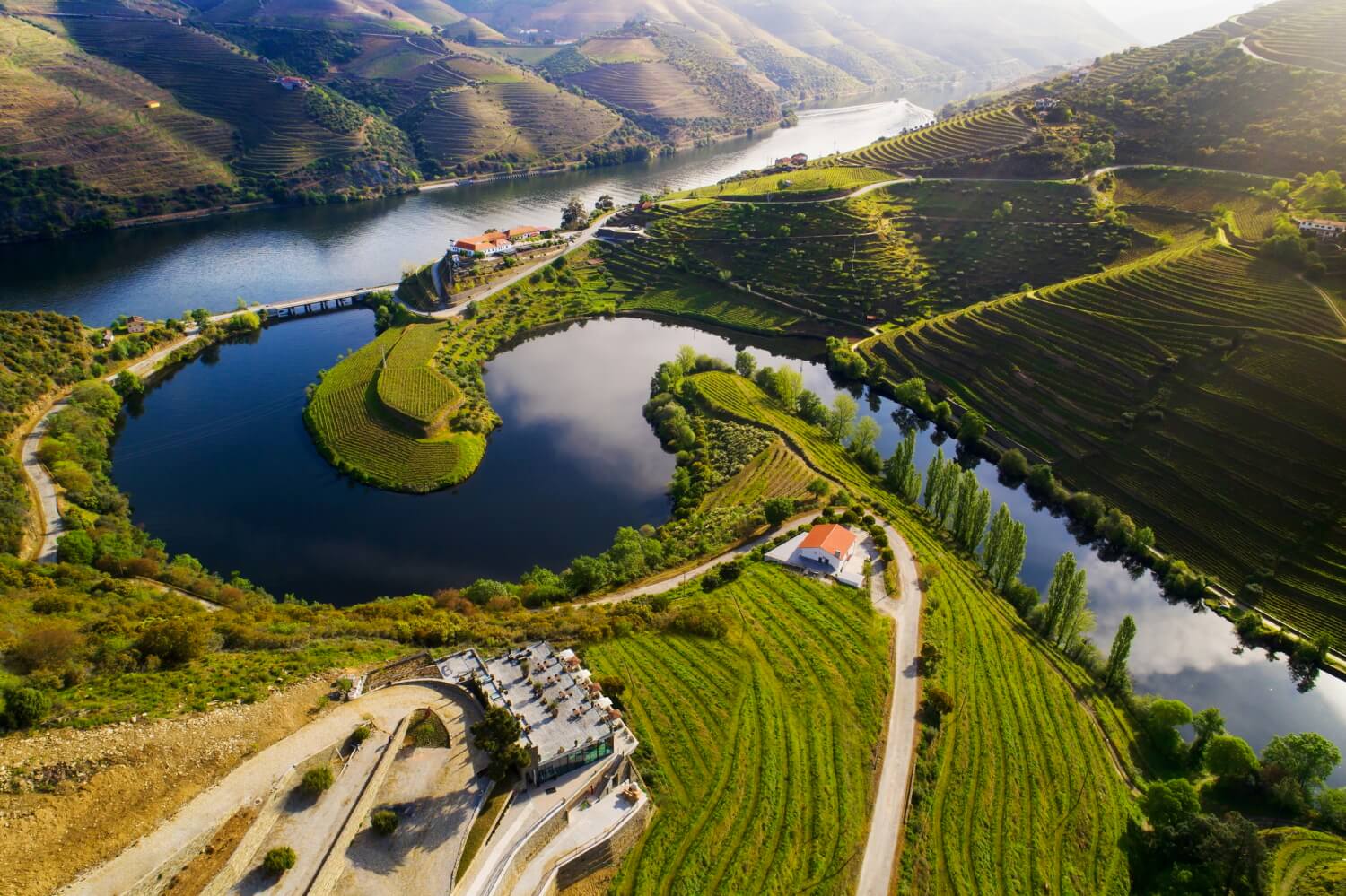April is Portuguese Wine month at The Good Wine Shop – a very welcome chance to share our enthusiasm for the amazing variety, quality and value that Portugal offers.
With a long list of grape varieties and regions, many of them completely unfamiliar to most people, Portuguese wine is more usually recommended by us than asked for by customers. Yet once tasted the “conversion rate” is very high… as our recent tastings in the Chiswick and Teddington shops proved.
Last year we featured the Vinho Verde region with its sub zones and stellar white wine makers at Soalheiro and Ameal. This month it’s time to devote some blog space to 3 of Portugal’s finest red grapes and in the next post, the much changed and improved Alentejo region to the south.
This is a country similar to Spain in its recent history (both lived under dictatorships – fascist in Spain and communist in Portugal) for most of the last century, shaking off those regimes within years of each other. Portugal’s famous Carnation Revolution, celebrated every year on April 25th, was almost entirely peaceful, as people and soldiers turned out on the streets of Lisbon brandishing not weapons but red carnations.
Little more than a decade later both countries had joined the E.U. and were benefitting from massive investment in rural areas – much of it directed to viticulture and wine cellars. That support was transformative for Portugal – helping to equip wineries with modern temperature-controlled cellars – particularly in the warm Alentejo region in the south.
As the younger generation of Portuguese winemakers have come on board, they bring expertise honed in cellars abroad and shared knowledge. Just as the World of Wine is crazy for local grape varieties (we are all so over Merlot), Portugal’s remarkable grape varieties are getting the attention they richly deserve.
So here’s a guide to just some of the hidden gems on our Portugal shelves.
The Douro region and Touriga Nacional

While Douro is famous primarily for Port production, the same grapes are used to make still, unfortified wines. Of these, Touriga Nacional is the most prized variety. It has wonderfully intense dark, juicy fruit with a perfume of violets in cooler spots and a naturally high acidity making it perfect for ageing. It’s almost always blended – with Tinta Roriz (Tempranillo), Touriga Franca and anything else that might be lurking the field blends of old vines common throughout the Douro.
Meandro is the second wine of Quinta do Vale Meão, named after the vineyards located on one of the most famous meanders of the mighty Douro River. Douro reds combine intensity with freshness making them very food friendly. Touriga Nacional’s rich black fruit is always at the heart of the blends. Drink them as a great alternative to Bordeaux and Rioja.
Dão and Alfrocheiro

Dão lies south of the Douro, east of the Atlantic and west of the mountains that separate Portugal from Spain. Its high plateau with schist soils and a benign climate, is sheltered from wind and rain but benefits from the cooling effects of altitude. It makes a lot of wine – and is a firm favourite amongst the Portuguese. The local grape here is Alfrocheiro – with its alluring mix of freshly mashed strawberries and blackberries with a slightly wild herbal edge, its freshness lifts the local blend of Touriga Nacional and Aragonez (the local name for Tempranillo). The wines age incredibly well and are outstanding value for money – mainly because of the large co-operatives here. More recently growers like Alvaro Castro at Quinta de Saes and Cabriz with their special selections, have shown just how fine these wines can be.
Bairrada and Baga

The cooler, coastal region of Bairrada, south west of Dão, is home to one of Portugal more challenging grapes – Baga. One man has revolutionised the way Baga is handled. Luis Pato, a retired chemical engineer turned wine maker, applies a mixture of precision and irreverence to this tricky grape, creating exhilarating wines that sit somewhere between fine Nebbiolo and Pinot Noir.
The trick is to tame the tannins and get the grapes to ripen thoroughly. To do this, he picks mid-summer to reduce the number of bunches on the vine. With fewer grapes to ripen, the vine can channel all its energy into ripening the remaining bunches completely. Ever the innovator, he makes a cracking sparkling wine with the first green harvest too.

The man is irrepressible – and a terrific wit. Each label is an homage to his name (Pato means duck in Portuguese) either in the form of a silhouette or a beautiful illustration for some of his single vineyard wines like Vina Pan and Vina Barrosa.
If I were allowed only one Portuguese red in my desert island dozen it would be Baga and it would be from Luis Pato.
With such a rich heritage of different and distinctive grapes, Portuguese wines can seem a bit too much to get your head around – but they will reward your efforts handsomely.
Next time you visit your local Good Wine Shop, put Portugal at the top of your list – there really is a lovely wine for everyone.



